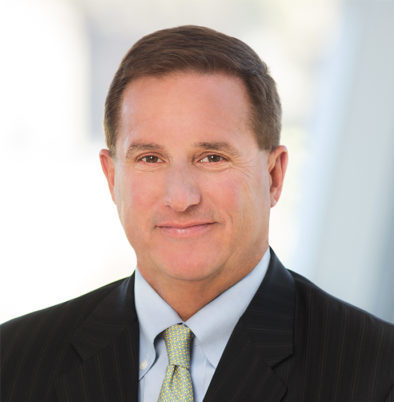
The panic that cloud is causing within the traditional IT industry at first glance looks hugely out of proportion to the current size of both sectors.
In total the cloud market globally won’t even reach $35bn this year.
When compared with the enterprise IT market for compute, storage, network, database, middleware, applications and everything else it remains small. The total enterprise and consumer IT market is worth around $2 trillion dollars globally and is currently split around 50/50.
However the growth for the mature enterprise IT market is relatively flat with CAGR where it exists in low single digits. The growth in Oracle’s PAAS and SAAS was surging 82% in the last quarter.
Oracles strategy is to play across the three layers of cloud, says Mark Hurd, Oracle CEO.
Saas, which is ERP, sales, apps, PAAS, authoring tools, databases, Java, IOT, analytics and IAAS the infrastructure layer, physical servers, storage and data centres.
Oracle has a SAAS play, it has a PAAS play and it plays in infrastructure. It operates two UK data centres, one in Scotland and one in Reading in Berkshire.
CBR: As a percentage of Enterprise IT spend – where will off prem cloud spend peak?
Mr Hurd: “If you look at the industry a different way, around one third of the industry is dev test. [one third of a trillion dollars- according to Mr Hurd’s own high level estimates for the size of the global enterprise IT market.]”
“It is possible that all of dev test goes to the the cloud in a relatively short period, of five or six, years. At Oracle Openworld I made a prediction that by 2025 100% of dev test is in the cloud and I think I could be slow.”

“Why this will happen?”
“The cloud infrastructure for dev test, is that people have servers, storage, data centres and operating systems. When you do the math, you find it is utilised 17-21 or 22 per cent of the time. So 80% of the time it is not doing anything. It is just sitting there, depreciating. Now if you can get rid of all that and move to a world where I can get what I want for as long as I need. If the requirement is you want to build an application in Java you can go and get it in Java. If you want right now you can get Oracle database as a service. You can get Python, you can Ruby, you can get whatever authoring language you want and any database you want. You can get whatever you want and you don’t have the servers, you don’t’ have the data centres.”
“Let’s pretend you have an incredible IT shop and you have double the productivity and its 40% and let’s pretend the guys make 20% margins, you’re still going to save 40%. I think it won’t just be IT people and developers driving this. Once you get CFOs and CEOs looking at this – they will say why aren’t we doing this?”
“Let’s just pretend I’m right about that one third of IT. Now imagine storage, compute, tools, databases and there’s plenty more. If I’m just right on those two subjects, then 50% of IT is in the cloud.”
“Of the remainder one third of IT is backing up, disaster recovery, business continuity which pretty much mirrors what you’ve got and you are not going to back that up on prem.”
“When it comes to applications I think production applications with a commercial alternative will all be in the cloud for the many of the same reasons.”
“My answer would be by 2025, I think 80% of the workload will be in the cloud. Maybe I’m wrong and its 73% or 83% but it’s not going to be 20%. It’s just too compelling.”
Six things Mark Hurd said about cloud:
I believe in simplicity
 If you win the apps you win the entire stack. Our strategy from ten years ago was to rewrite all the apps to be pure SAAS.
If you win the apps you win the entire stack. Our strategy from ten years ago was to rewrite all the apps to be pure SAAS.
We don’t think customers will want ten clouds.
The biggest enterprise software company in the world has re-written all of its software for the cloud.
Our R&D is in excess of $5bn
This is just the beginning
CBR: Will the industry consolidate more. Will more SAAS players being bought up and brought into mega cloud players?
Mr Hurd: “There aren’t that many [SAAS players]. When you talk about M&A in my line of work, you look at multiple filters to decide on any acquisition. Whatever we have bought has made strategic sense to us. We don’t buy companies that don’t make strategic sense. There are many companies who buy other companies for cash flow or some other purpose. We actually buy companies that align to our strategy. Whatever we buy has to make financial sense. We’ve been in most cases the first mover in the categories where we acquire and we typically buy the best companies. We’ve not had a strategy to buy crumby companies as a copy cat. And if it makes financial sense and it has to make operational sense. We have to be able to run it effectively or it is not valuable to us. All those filters have to be in place for us to do something and we use that framework against the available opportunities in the market.”

Oracle is to buy Netsuite for $9.6bn




